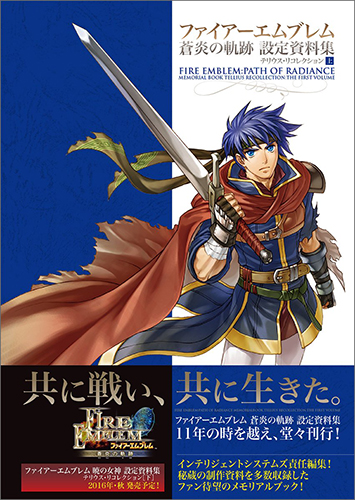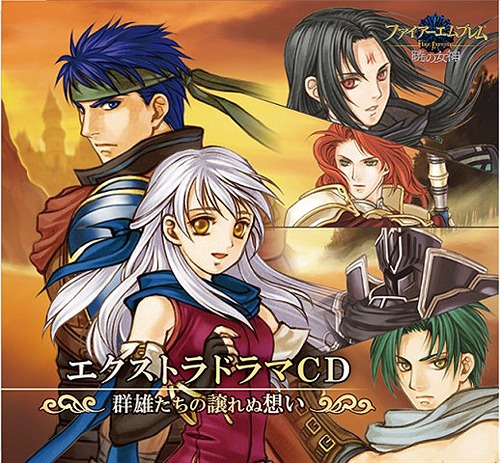
With the series’ creator having left the company on bitter terms, things weren’t looking great for the once extremely promising RPG. The once ambitious franchise was moved to underpowered handhelds with simplified mechanics and scope. However, newly found sales in the West were extremely encouraging, so Nintendo gave the go-ahead to finally bring the series back to consoles. Things might end up working out for Fire Emblem after all.
Well, things do eventually kick into gear for the unlikely smash hit, but it takes a little longer than anyone expects. It’ll have to sink a lower first.
Return to Consoles
Fire Emblem: Path of Radiance should have been, by all accounts, a total failure. People often forget this, but almost all of Intelligent Systems’ previous work before the GameCube was 2D. They had exactly one 3D series that made use of any kind of 3D modeling, and that was Paper Mario: a series where the art direction actually lends itself better to extremely basic shapes and texturing. All their work otherwise was with 2D sprite work, and that was simply not marketable on consoles in the mid-2000s. Their inexperience with 3D tech showed. Despite being an extremely late-generation GameCube title, Path of Radiance’s graphics and animation were about on par with something that would have launched with the Dreamcast.
Not only that, but the GameCube was floundering. Sales of the console were extremely poor, and software just wasn’t moving either. It’s no surprise that it is the worst-selling title in the franchise in Japan, with barely over 150,000 copies sold. Nintendo never released global sales numbers for the title, which means it didn’t break a million units.
Yet Nintendo does cite Path of Radiance as being a strong influence on GameCube sales in 2005. It does stand to reason: graphics aside, the game was instantly welcomed as one of the best entries into the now-storied franchise by the fanbase, with its hero Ike winning popularity polls by significant margins even today. It’s the first Fire Emblem game since Kaga left that showed that Intelligent Systems could create a conflict and world just as compelling as he could, with some excellent tactical gameplay to match the vision. It was a bit rough around the edges, but it definitely generated some buzz. Also, being Nintendo’s only major release in 2005 gave it some room to breathe and find a fanbase on the console. Maybe sales weren’t the best, but it did at least show a great deal of promise for future success on a system that maybe wasn’t struggling so much.
The Surprising Flop
This is where the real issue lies. Path of Radiance’s sequel, Radiant Dawn, would come out on the Wii just 2 years later. The Wii was just starting to hit its stride. Path of Radiance built up a lot of goodwill by its fanbase, and Radiant Dawn was promising to be the biggest Fire Emblem to date. What’s even more shocking is that, when it released, it actually made good on its promises. Everything seemed poised for Fire Emblem to return to the prominence it once had on the Super Famicom.
There was just one problem: Radiant Dawn was a direct story sequel very specifically covering the fallout of Path of Radiance. The Wii was picking up new fans they didn’t have on the GameCube, which meant if they wanted to play this hot new strategy RPG, they’d have to track down a copy of the game and the necessary hardware to play it. The Wii could play GameCube games, but they’d still need to purchase a GameCube controller and a memory card to play it, making Radiant Dawn too much of an investment for the average person. The game barely sold better than its predecessor in Japan (just 170,000 units).
And, unfortunately, Nintendo didn’t really have the Western fans to fall back on this time either. We didn’t mention this earlier, but one of the reasons why Path of Radiance picked up steam overseas was due to the addition of an Easy mode specifically created for the international release while also removing Path of Radiance’s notoriously difficult Maniac mode (derided by fans as one of the most unnecessarily difficult modes in all of FE). This left the game with an Easy, Normal, and Hard mode, which made it much more accessible for new players.
For some reason though, the translation team on Radiant Dawn wanted to stick to the same naming scheme while not having Intelligent Systems make any difficulty adjustments. This meant Normal became Easy, Hard became Normal, and Maniac became Hard. This only made players and reviewers even more confused, as everyone would just choose the English Normal by default and get destroyed. Even if they could tone down the difficulty, the damage was done. Word of mouth was little-to-none. This was not helped by the fact that Radiant Dawn would launch just one week before Nintendo’s mega-blockbuster holiday title, Super Mario Galaxy.
Retreat to the DS
Naturally, both Intelligent Systems and Nintendo were disappointed by the fact that what should have been the triumphant return of the series. Nintendo dropped support for RPGs so hard after Radiant Dawn’s failure that they’d even sit on the completely translated Xenoblade and Last Story because they thought RPGs weren’t popular in the Americas anymore. We have no proof that they used Radiant Dawn as evidence, but Nintendo of America stated the reason they passed on those titles was due to JRPG’s perceived lack of popularity in the region. We find it hard to believe that Radiant Dawn’s failure didn’t cross someone’s mind when making the call.
Intelligent Systems, on the other hand, would move back to what they were comfortable with: low budget handheld projects. However, rather than keep trying to succeed with new worlds, Intelligent Systems would do something that worked for them once before: remaking the original Famicom game. After all, fans back in Japan still had quite a bit of nostalgia for the older games. There was also an interest in seeing where Marth came from in the West thanks to Smash Bros. It wasn’t a bad idea.
There were some pretty key issues with their approach though. Namely: the art direction. Say what you will about the quality of the character models and animation in the Radiant series, but at the very least the art is nice enough to mask some of the technical shortcomings. However, with Shadow Dragon, they took on this extremely weird minimalist-digitize sprite look (think Mortal Kombat) that, while it animates nicely, gives the game this extremely cheap and unappealing look. This, combined with doubling down on the series’ hardcore nature (with quests that you can only get if certain characters die by certain chapters), turned off any prospective new customers.
Final Thoughts

Thankfully, in spite of the mismanagement of the series, there was a light at the end of the tunnel. Next time, we’ll cover the success that was an extremely long time coming.
Recommended Post
How Fire Emblem Awakening Got It Right
Recommended Post



